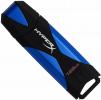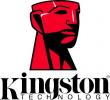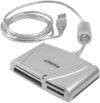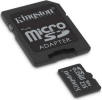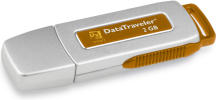Reviews related to : Kingston
When struggling to cope with different USB formats, this next device might help.
Standards, especially in the field of computers, can prove useful as different companies build their kit to fit in with, and take advantage of the currently accepted methods of achieving device partnerships. However, due to their popularity, the family of Standards does tend to grow. An obvious example of this is the USB Standard which started life as a device that could be daisy-chained but that it never happened. Now we have several different USB connection formats.

Kingston Data Traveller & MobileLite Duo 3C : Kingston 128GB DataTraveller Elite G2 & USB Type-C microSD Card Reader
If you need to move data around then on a Ethernet or Wi-Fi network should be easy, if however the files are in different places this is harder, so maybe a large capacity USB stick can help, or possibly to move from a mobile device to a PC then an OTG device can help, both are covered with the below.
Inflation is a thing most of us have problems with in one way or another, as far as computer memory it means that programs and the data they use can be larger, much larger, a long time ago – yes I am old – the operating system its programs and data fitted on a floppy disc of less than 100MB here however is a USB stick that can contain up to 115GB of data.
With claims that much of its stock being 20% cheaper than elsewhere in the UL, Reichelt Electronics supplied this next product.
File sizes, over the years, have grown at a prodigious rate, even far outstripping my waist measurement. At the same time, hard disk sizes and other types of storage media devices, such as flash sticks and memory cards, have expanded to create the storage space necessary to hold the bloated software products that we cannot do with out. Talk of 20MB hard drives.
Now that SSDs are becoming more affordable it is a now a good time to enhance the performance of ones PC. The SSDNow 300 upgrade kit from Kingston Technology provides the parts together with the necessary instructions to upgrade either a laptop or desktop.
Solid-state drives are more robust than hard drives as well as being faster, quieter and consume less power. While these are all key factors for the laptop user, speed is the major benefit in a desktop. While these SSDs are claimed to be 10 times faster than a hard drive, one never achieves this ideal as there are many factors involved. As there are great similarities in upgrading both types of machines, each Kingston kit contain the parts required to upgrade both types of machines.
Our data is often personal and we like to keep it with us when out and about. This next product offers to help in this respect.
While the title of this next product might make you think of a comic book Super Hero character, I was a fan of Captain Marvel in my youth, and some might feel its functionality is such that there is a definite link in there somewhere. And of course there is the design emblem that could re-enforce the Super Hero connection but more on that a little latter.
Power users will often find that increasing the amount of RAM over and above the basic amount that is generally installed in a PC will produce a worthwhile increase in performance as the performance of serious gaming or video type applications is frequently tied to the amount of available memory. Using the Memory Search on the Kingston Technology (KT) website enables one to identify what RAM is required for a particular machine and provides guidance in carrying out the upgrade so that the user can tackle the job with confidence.
Although KT’s goal is to sell its RAM, and it claims to be “the world’s independent memory leader”, it does not over-hype the benefits. One of the FAQs points out that: “Additional memory will not necessarily increase the performance of your computer. It will allow you to run more programs or processes at once or more memory intensive programs.
While there are a number of gaming headsets currently available, the subject of this next review comes from a surprising source.
Up until very recently I had always considered Kingston Technology to be purely a company that concentrated its energies and expertise on the development and manufacture of memory solutions that were put to good use in a vast sway of devices ranging from desktops, printers, flash drives, mobile phones and digital cameras. However more recent arrivals from Kingston Technology have widened the company’s field of expertise.
Adding wireless capability to your SD memory cards and USB flash sticks is just one feature found in a device from Kingston.
Like many others, I struggle to fit my favourite music, video clips and photos on the limited storage capacity offered by my smartphone and/or tablet. No matter how hard I try to squeeze this content into my mobile devices, I always end up with several items waiting in a queue for space that never appears. However I do have a number of flash sticks and memory cards that are generally underused, being tucked away in drawers or gathering dust on my work space.

Kingston USB3 Media Reader and 32GB Micro SD Card and kit : Kingston USB3 Media Reader & Kingston 32GB Micro SDHC Card
Kingston are a large supplier of memory, here I am looking at a large capacity micro SD card, but first a card reader for a range of cards. A lot of people do not know that certain versions of Windows will not read USB3 card devices.
In fact Windows XP will need a new driver to be able to read the larger capacity – over 8GB – devices. Today with huge file sizes 8GB is often too small, a word that was popular a few years ago when things fitted in less than 1GB was bloatware, now of course its large video files that are the main culprit. Externally this Kingston product looks like a lot of other multi card readers.
SSD drives are slowly getting bigger, more quickly they are becoming lower priced. So is now the time to get one? Certainly the PC/notebook units I have reviewed that have at least a small SSD drive show a huge increase in booting speed.
This item from Kingston is a 120GB unit. This is the same size as in the HP Spectre XP Ultrabook to be published very soon, that unit was manufactured by Samsung but in essence it’s the same size in dimensions and capacity. The Kingston Technology SSDNow V300 measures 10x7x.5cm and weights only 90g. First the claims on the box 10x faster than a 7200RPM standard hard disc. Then the 450MB/s read and write speed this can do.
Those innovative people at Kingston have come up with a possible solution to increasing the storage capacity available to your mobile device.
While you nice, new, shiny smartphone or tablet will come with a certain amount of available storage space, there will come a time when you will struggle to find the space to store items you would not want to be without. This occasion is bound to happen sooner or later depending upon factors such as the manufacturer and the percentage of your disposal income you were prepared to part with when making the purchase.
SSD drives are more expensive than standard hard drives but they are faster. Here I am looking at an internal unit from Kingston and also the first USB3 external unit I have seen, this from OCT technology it is called ENYO.
This is described as a performance upgrade kit and everything that you will need is in the box, apart from the screwdriver. Included are the 240GB drive, all the brackets, screws and cables and even a caddy to place your old hard drive in so it can finish its life as a USB drive the cable is supplied. Finally a CD-ROM with rather good disc cloning software.
First a drive to let you easily stream files to an i device and it has USB so getting them from the PC to wi-fi drive is easy too. Second a new generation of internal SSD drive small in size and above all very fast transfer rate.
Transfer files between a PC and an ‘i’ device wirelessly. If your PC does not have wireless then transfer the files photos, videos etc by the supplied USB cable. In both cases download the App from the Apple store. However should you own an Android phone do not worry as there is an Android App for you as well. This 32GB capacity device looks like a small external hard drive which of course it is but it is also a wi-fi device. It is 12x6x.5cm and weights 84grams.
Earlier this year I saw a demonstration of Solid State Storage demonstrated at an event currently I understand it is available in 64 and 128GB. I was sent a 64GB unit to review by Kingston, their price seems quite reasonable.
So what do you get. A 64GB module that fits into a SATA slot in a PC, a copy Acronis True Image software and an external USB case to insert your old SATA drive. try to insert the SSD in the external case it will fit but it will work. You cannot format the unit while it is a USB drive, full instructions are supplied in the box. The box is called SSD with Accessory Kit. My kit was for a notebook but they also do a similar kit for desktop machines.
Following the trend of merging different technologies into a single device, Kingston Technology adds a new offering to its product portfolio.
Over the last few months we have covered a number of memory card offerings and USB flash devices. Now it is the turn of a product that combines a memory card with a USB stick device that takes over the functionality normally provided by a card reader. As the world's largest independent manufacturer of memory products, it is not too surprising to know that this new approach to memory cards and USB connectivity should come from Kingston Technology.
The arrival of a new high capacity memory card format has seen the need for a device capable of supporting this format. Kingston is happy to oblige.
Earlier this year the SD Card Association introduced the SDHC (Secure Digital High Capacity) memory card format. Unlike the previous version of SD cards, which had a capacity of up to 2GB and used the FAT 16 file system, this new SDHC format is capable of supporting capacities ranging from 4GB up to 32GB using the FAT 32 file system. The increase in capacity and change of file system does mean that legacy devices will be unable to read the new card format.
I am certain, that at one time or another, many will have encountered the situation where a memory card is filled just when you need to store additional data. A possible solution is available.
As we grow older our memory tends to suffer - at least mine does - and we come to rely more and more on devices that aid us in such matters. The growth of this dependency has had the knock-on effect of putting a strain on the memory capabilities of such devices with increasingly storage capacity being a vital requirement. In an effort to satisfy this mounting demand, a new standard has been developed for the popular SD memory card format.
My first SD card had a capacity of 32MB but todays storage needs call for more space such as that found on the smallest (with regards to physical size) memory card.
Kingston Technology has recently added a new SD product to its portfolio of portable storage devices. However before revealing more about this Kingston product, lets take a brief look at some background details regarding the SD format. Mobile phones, digital cameras, early MP3 players and PIMs (Personal Information Managers) all have roles to play in this modern technological world while making use of memory cards as their preferred storage medium.
I cannot think of anything recently that has had so many names for a USB device, Pen Drive, Stick Drive and USB Stick to name but three, now with Vista utilizing them names like Ready Boost and Ready Flash are added into the mix.
Here I am looking at two such devices one by San Disk and the other by Kingston Technology. I have no doubt that numerous other such devices are out there. The only proviso as far as Vista is concerned is that it needs to be a USB2 device so that data can be moved quickly. The whole purpose is to store all the small files available for quick access.
Data in your pocket use to mean a floppy disk but now we have USB flash devices larger than my original hard drive.
Do you remember your first USB memory device? In my case it was an 8MB unit. At the time this device was being promoted as being suitable for all your personal needs when on the move from location to location. Today most users would be embarrassed to be seen with a USB device of such a low capacity and would consign it to the back of a drawer while making use of one of the higher capacity devices that are currently available.




